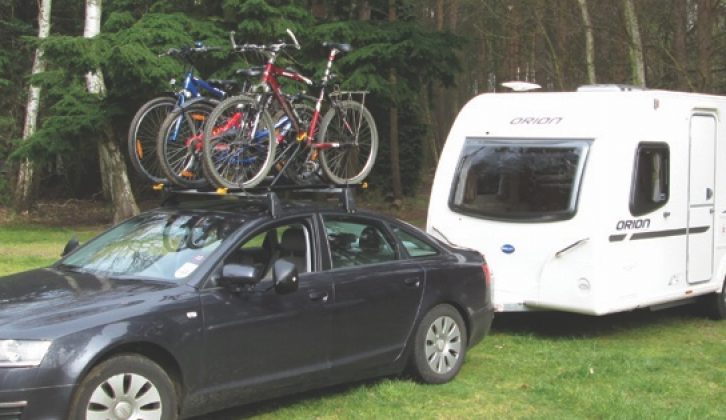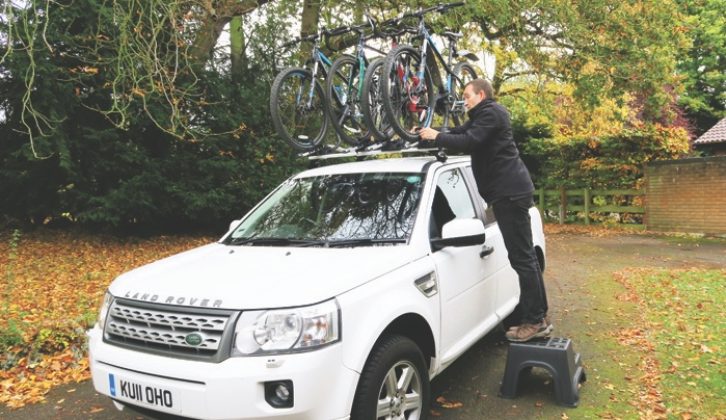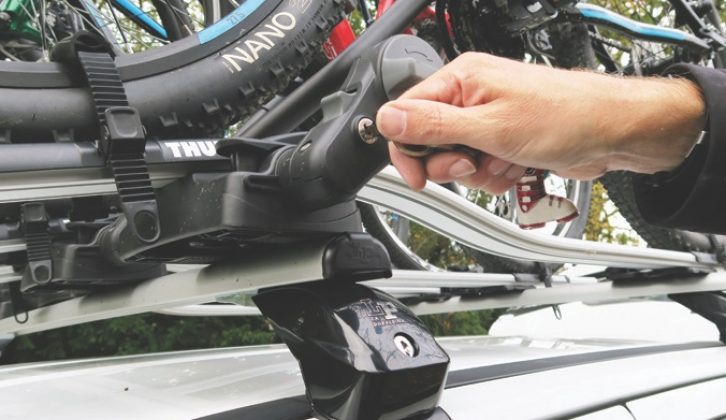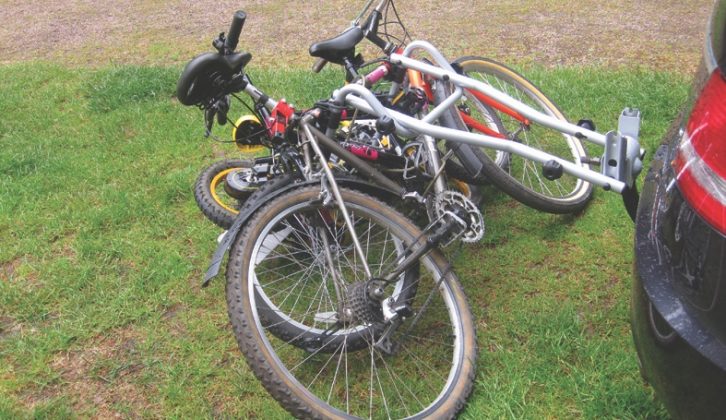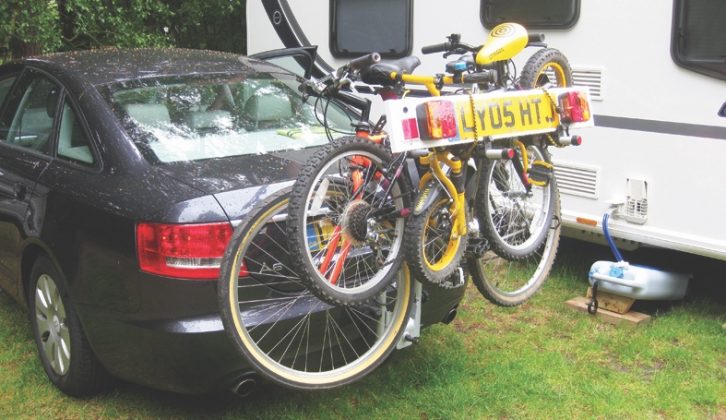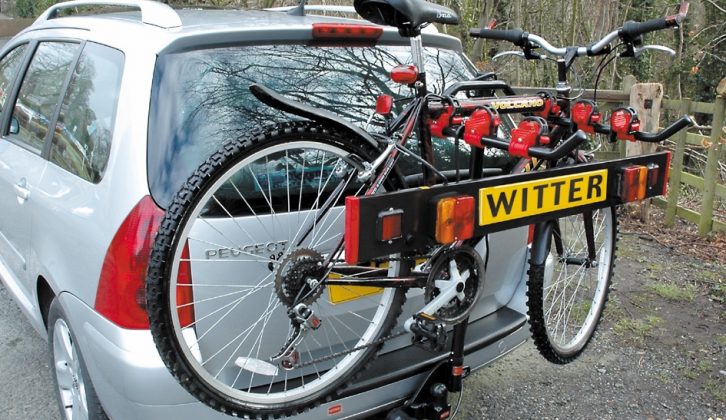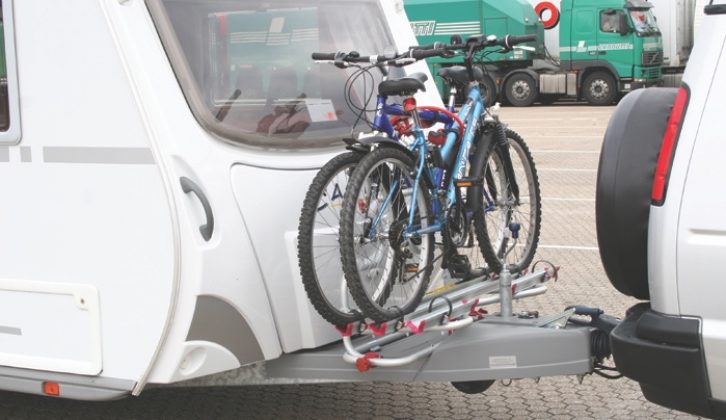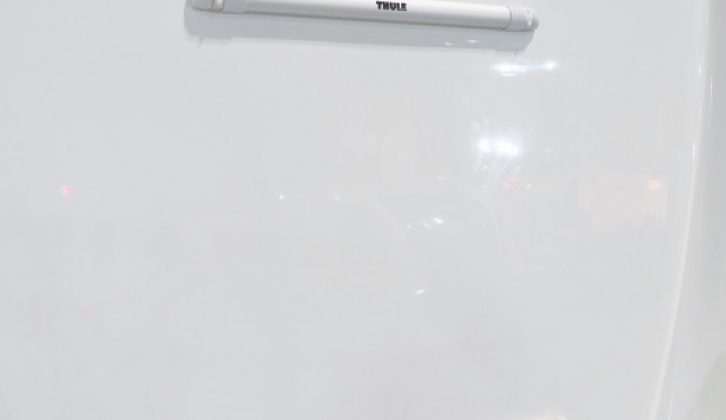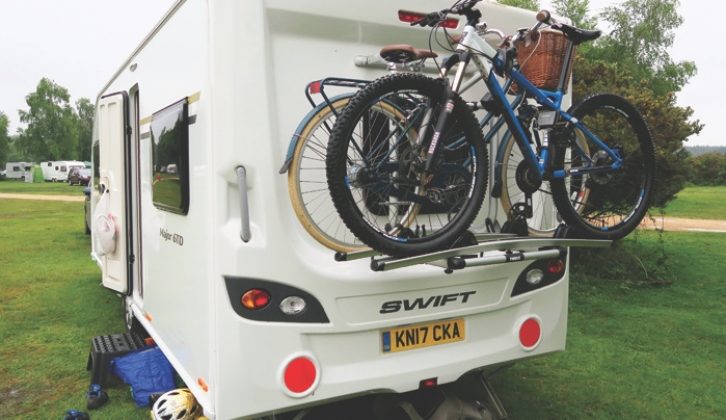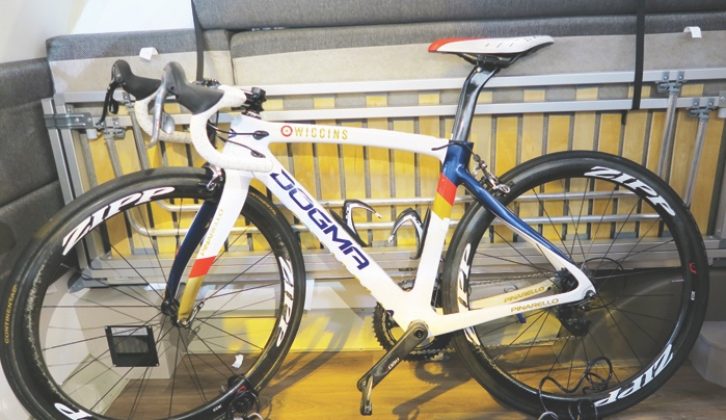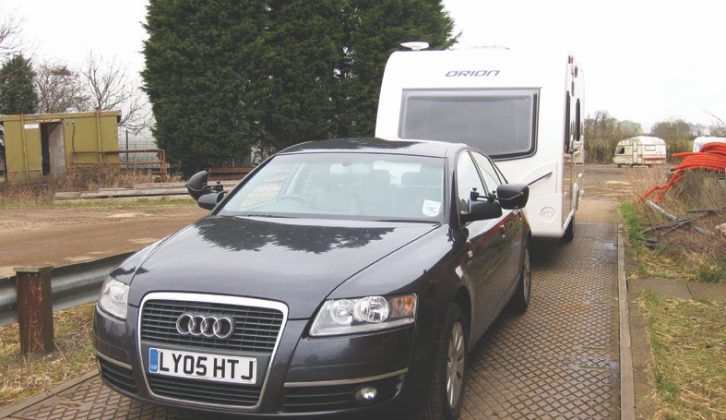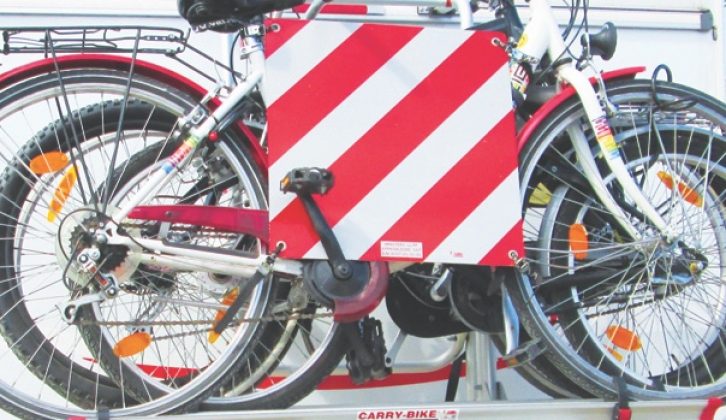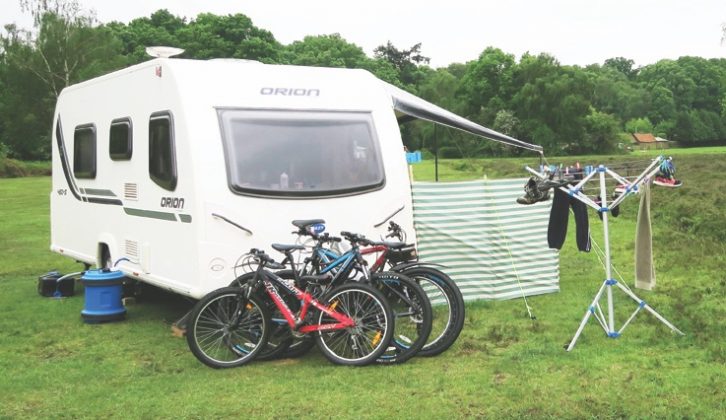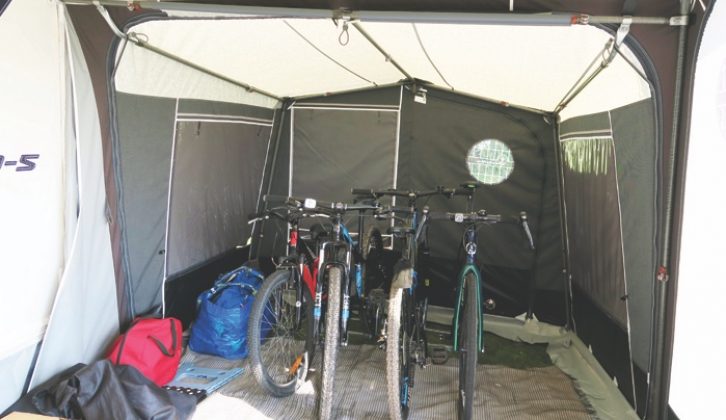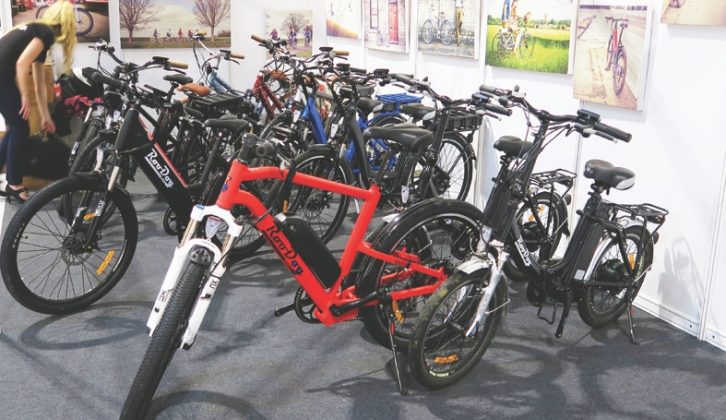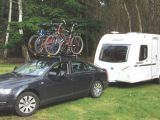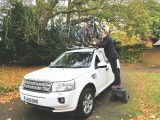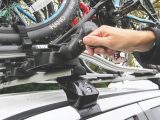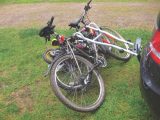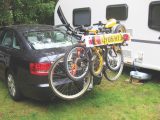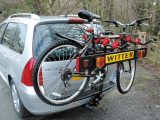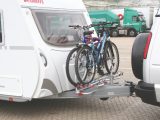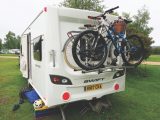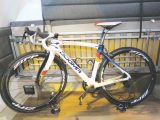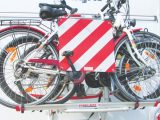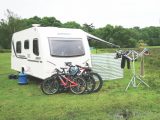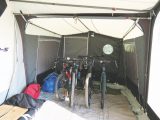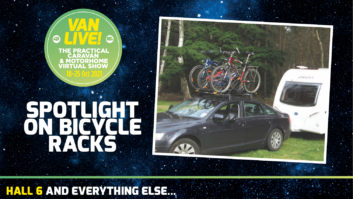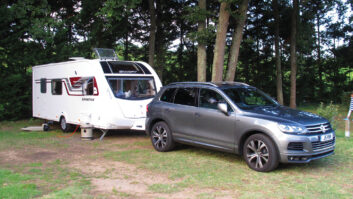With the growing interest in competitive cycling events such as the Tour de France and indoor track cycling, more and more of us are developing a renewed passion for cycling. My husband enjoys competing in triathlons, but I prefer to potter about on my bike and enjoy the scenery.
Many caravanners enjoy cycling on and around the sites they visit.
Thanks to Sustrans and other providers, there has been a pleasing development of special routes, often using former railway tracks, so you don’t have to worry about cars or their fumes. These networks offer a safe way for families to enjoy this popular pastime.
Not everyone possesses the athleticism to pedal up steep hills without gasping for breath. Little wonder, then, that a new breed of battery-assisted bikes is attracting interest from those who need assistance.
Several suppliers now attend caravanning shows, and their motorised mounts come in all sorts of styles, from mountain bikes to city models. Of course, if you require a boost from a motor, you’ll also need an electrical supply to recharge the bike when its battery is low.
These machines tend to be heavier than standard pedal cycles, so keep this in mind when you buy a rack. There’s also the matter of payload.
Now let’s take a look at some of the options available for transporting your bicycles while you are towing a caravan.
Car-mounted
Roof-mounted carriers are attached to the roof rails on your tow car, but do bear in mind that it can be a bit of a challenge to get the bikes up on the roof, particularly if you have a high vehicle, such as a 4×4 or MPV. We find our caravan steps a real help with this process.
Frame-holding racks offer greater security, with an arm that attaches to the bike’s frame and straps to secure the wheels. One word of warning, though – make sure the frame holder fits securely to the frame of your bike.
I had a bike that slipped out of the frame holder while I was towing. Luckily, I had added some extra strapping to hold the bike in place and this prevented it from falling off.
Towbar-mounted racks are a popular option for cyclists and can take up to four bikes. Obviously, they can’t be used while towing a caravan, but they are fine once you have reached your destination.
Some have a tilt function, which will enable you to access your boot while the bikes are loaded. Don’t forget that it is a legal requirement to keep your numberplate and rear lights visible, so you will need to fit a numberplate board.
Companies such as Witter offer a flange towbar-mounted cycle carriers, which enables you to tow your van and carry your bikes at the same time.
The weight of the bicycles is fully supported by the towbar. Check that you can complete a tight turn without the bike handlebars making contact with the caravan.
Caravan-mounted
A-frame bike racks are popular in Europe, owing to the longer A-frame on many European models giving them the space to mount a bike carrier. But a word of caution – make sure you check the noseweight when fully laden.
Remember, noseweight is the down force from the hitch onto the towball and should be 5.7% of the caravan’s actual laden weight. Sometimes, moving items around in the van can help to achieve this target.
I have noticed that more manufacturers are pre-fitting brackets to the rear of caravans, to make it easier to add a bike rack. Although it is viable to mount bikes to the rear of a caravan, it’s not ideal.
The reason for this is simply that the extra weight on the rear can cause a ‘pendulum effect’, which means that the caravan will start swinging from side to side. Once this begins to happen, it can take some time for it to settle.
Another alternative option, of course, is to stow the bikes inside the caravan. If you decide to carry your bikes this way, make sure they are securely fastened, to avoid them moving around while you are towing, and cover up any sharp edges, such as the pedals, with foam or similar, to prevent them from damaging the furniture.
Secure the bikes close to the axle, then check the noseweight and adjust distribution of the load if needed.
Swift Basecamps have special brackets mounted in the floor, to which you can secure your bike while in transit.
Weight problems
Caravans have a strict loading limit, which you must not exceed, and a collection of bikes will have a significant impact on your payload.
Unless you decide to carry bicycles on your car’s roof rack, you’ll need to check whether your normally laden caravan offers you the scope to carry bikes. When planning to add heavy items to a caravan, we recommend you check your van on a weighbridge – and that’s no exception here.
Touring abroad
No matter which countries you might be travelling through, it is important to ensure that your numberplate, lights and indicators are clearly visible.
In some countries, such as Spain and Italy, it is mandatory to display a red and white diagonal-striped warning sign on protruding loads, including bikes.
It is also a legal requirement in Italy for the sign to be made of aluminium, although in Spain, it can be plastic or aluminium. These signs are manufactured by Fiamma and can be purchased from most caravan dealerships or accessory shops.
As always, it is also advisable to check the latest legislation in all of the countries that you intend to visit, before leaving on your adventures.
Final thoughts
Don’t forget that you’ll need to invest in robust locks and always secure your bike when on pitch. We also found that our Isabella Annexe came in very handy as a bicycle store when on a recent visit to the New Forest.
With a little planning, cycling can be a great way for all the family to get fit, stay active and enjoy the great outdoors. So, get on your bike!
Don't forget it's a legal requirement to keep your numberplate and rear lights visible
